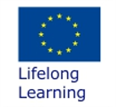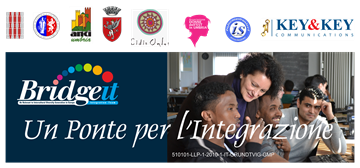| |
“All human beings are born free and equal in dignity and rights. They are endowed with reason and conscience and should act towards one another in a spirit of brotherhood.” (Article One of the Universal Declaration of Human Rights, drafted in 1948 at the foundation of the United Nations) Last Update 27 Sep 2022
Be Relevant to Intercultural Diversity Generation in Europe - Integration Team
Our Other Projects
 Business_mail LEONARDO DA VINCI
ARTERY Art – Education - Therapy 510260-LLP-1-2010-1-PL-GRUNDTVIG-GMP Multilateral Grundtvig Project October 2010 – September 2012
|
What we want
|
|
This project has been funded with support from the European Commission.
This publication reflects the views only of the authors, and the Commission cannot be held responsible for any use which may be made of the information contained therein.
© Copyright 2008 Key & Key Communications P.Iva 02107170546 - Italia - All rights reserved - Best view with Internet Explorer
TERMS OF USE OF THE BRIDGE-IT WEBSITE AND VLCE PLATFORM










































